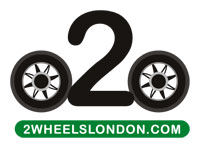Clearing up confusion over the rights and wrongs of motorbikes filtering
Many riders new to the roads are left confused by filtering – the practice of slowly overtaking stationary/slow moving traffic on your bike, perhaps when congestion brings everything to a halt at very busy junctions or roadworks.
They ask: Is it legal? Is it wise? Is it safe…?
Well, we’ll try to clear it all up here – but be warned, this is a bit of a grey area.
First of all, it is legal – but can be deemed illegal at times.
It’s also safe – but can be really risky.
Still confused? Don’t blame you. Read on…
Motorbikes, scooters and moped riders are often seen filtering – threading their way slowly and carefully past cars and vans stuck in queues. It’s no surprise riders do it; one of the reasons why many take to two wheels to get around our big cities is that bikes allow them to keep making progress during the busiest periods. Rush-hour journey times can be significantly reduced for bikers over cars and vans. But you have to remember some simple rules if you are going to stay safe.
To start with, it is legal. In the Highway Code the advice is simply ‘to take care and keep your speed low’, but there’s no doubt you are allowed to filter.
But there are times when it is not legal, such as when passing queuing traffic in a no overtaking zone or on the approach to a pedestrian crossing, with zig-zags.
You can also be prosecuted if police deem you have filtered recklessly, for instance, at high speed or if you pass too close to other road users. It is also likely to see you in trouble if your filtering causes another road user to take evasive action. Finally, never cross a solid white line in the middle of the road.
But is it safe? Like all riding, if done properly, yes, but always with inherent risks.
As the Highway Code says, filter at low speed and you should have no problems – though the key part of that last sentence is “at low speeds.”
Don’t race through traffic. A good rule of thumb is to go no more than 10mph faster than the cars stuck in the traffic queue – so if they are not moving, you know how fast you should be going!
Never filter where the space between traffic lanes is restricted – and certainly don’t aim for a narrow gap and hope to force other road users to clear a path for you. That’s one of the ways filtering quickly becomes illegal.
Keep your observations sharp. Anticipate when other road users may be switching lanes, particularly on approaches to filtered junctions.
Impatient drivers often decide to suddenly switch lanes, particularly if they think another lane is moving faster than theirs. They have a quick glance in the mirror – if at all – and lurch across the road. As a result of their impatience they fail to spot the slim silhouette of a motorbike coming up behind them. To avoid them, always ride at a speed that allows you to take control if another road user suddenly moves in to your path.
This is a reason why filtering at nights or in poor light is particularly dangerous. Even if a driver has a good look in their mirror before switching lanes, all they will see is a load of lights behind them. A filtering bike at night is easy to miss – that’s why we’d warn against doing it.
What else do you need to know? At slow speeds your balance can be compromised so be careful: don’t make sudden moves or try to switch from one side of the lane to the other. Be aware that drivers in queues may leave their car angled in their lane, which may cut down the space for you to pass them.
Finally, watch out for heads: drivers will often suddenly thrust themselves out of the window to get a better view of the scene ahead. Passing too close could lead to problems.
Filtering is a key area of urban riding and one that always generates considerable debate. But getting it right is important; most rider training courses will devote considerable time to explaining the right and wrong way to do it.
Successful filtering is really a question of balancing risk with progress. Ask yourself if filtering really will help you continue your journey – and if doing so involves any risk.
If the answer to the second question is yes, it’s not worth it for the time you’ll save. Just sit back on your bike and wait for the traffic to move.
You’re never in that much off a rush to crash.
